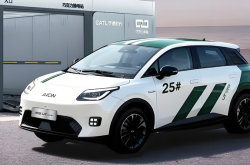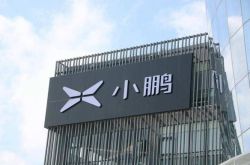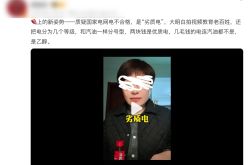Biography of Li Bin in 2024: Can NIO Break Free from Capital Dependence?
![]() 02/05 2025
02/05 2025
![]() 702
702
Author | Yuan Fang For more financial information | BT Finance Data Hub The article is 4661 words long and is expected to take 9 minutes to read
"NIO's current dilemma stems from the paradox of 'cost inflation' and 'limited market share growth.'"
2024 was a year brimming with challenges and pressures for Li Bin and NIO. After several consecutive years of losses, NIO had hoped to achieve profitability in 2024. This goal carried not only the expectations of investors but also concerned the strategic direction of the company's future development. Despite Li Bin's repeated assertions that "profitability is just around the corner," NIO failed to cross the break-even threshold in 2024.
As of the third quarter of 2024, NIO continued to incur losses. While the market environment and technological innovation offered some positive signals, high R&D costs, intensifying market competition, and fluctuating raw material prices posed severe pressures on profitability.
Despite securing substantial funds through multiple rounds of financing, the stability of NIO's capital chain remained a concern. The question of whether frequent capital injections could truly propel the company towards profitability persisted.
Against this backdrop, NIO's sub-brand strategy starkly contrasted with Xiaomi Automobile's single-model strategy. Why could Xiaomi, another leader in China's new energy vehicle industry, swiftly penetrate the market with a "single-model" strategy, while Li Bin opted for a complex multi-brand path? Could NIO's profitability issues be attributed to its over-reliance on capital market support?
Reflecting on Li Bin and NIO's 2024, it was undeniably an extraordinary year. This year's developments offer insight into Li Bin's mental journey.
1. Li Bin and the Quest for Profitability
In 2024, Li Bin once again pushed back the profitability target. In NIO's first-quarter financial report for 2024, Li Bin confidently stated that NIO would achieve profitability in the upcoming quarters. However, despite the company's efforts to launch new models, increase R&D investment, and expand market share, NIO's financial situation remained unchanged.
The Q2 financial report for 2024 revealed that NIO continued to incur losses, with a net loss of 3.2 billion yuan, a year-on-year increase of 10%. This result fell short of market expectations, and despite multiple rounds of financing, NIO failed to reach break-even. This phenomenon sparked deep skepticism in the market: where does NIO's profitability issue lie?
Firstly, NIO's failure to achieve profitability on schedule was due to its continued increase in R&D investment. According to NIO's second-quarter financial report for 2024, its R&D expenditure reached 2.3 billion yuan, accounting for 22% of total revenue. This proportion is significantly higher than the industry average, indicating that NIO is maintaining high investment in technological innovation and intelligent development.
However, the economic theory of 'diseconomies of scale' suggests that excessive technological R&D investment may not yield the expected return on investment when the company has not yet achieved sufficient scale effects. Although NIO has leading advantages in product intelligence, autonomous driving technology, and power batteries, high R&D investment has not effectively translated into profitability without a significant increase in overall sales. Additionally, rising supply chain costs and raw material prices at the production end have exacerbated cost pressures. According to data from the China Association of Automobile Manufacturers, the price of lithium battery materials surged in 2024, further pushing up the production costs of new energy vehicles, and NIO was not spared from this impact.
Another significant challenge faced by NIO is the increasingly fierce market competition. In 2024, the price war between traditional automakers and emerging automakers intensified, especially as Tesla's pricing strategy exerted downward pressure on prices in the domestic market. Tesla's price reduction in the Chinese market directly impacted sales of high-end electric vehicle brands like NIO. To maintain market share, NIO had to adopt preferential policies, further compressing profit margins.
According to IHS Markit data, NIO's overall sales growth in the Chinese market slowed down in the first half of 2024, with second-quarter sales growth of only 5.8%, far below market expectations of 15%. Although NIO launched new models including the ES6 and ET7, their high prices made it difficult to gain sufficient market share in the low-end market, and competition in the high-end market became increasingly fierce, making it challenging for NIO's market share to achieve leapfrog growth.
Besides external market competition and internal cost pressures, another reason NIO failed to achieve profitability is its over-reliance on capital market support. In 2024, NIO completed two rounds of financing totaling over 5 billion yuan, primarily used for new product development and market promotion. While frequent financing alleviated the pressure on the capital chain, it also exposed NIO's lack of profitability. The 'capital dependence theory' in economics states that companies that rely on external funding for a long time are more prone to capital chain disruptions when facing market uncertainties.
Li Bin mentioned in multiple public speeches that "financing is the driving force for company development." Although this statement received a positive response from the capital market in the short term, it gradually exposed NIO's excessive dependence on capital operations. The market and investors began to question whether NIO could continue operating based on its own profitability without further financing. In fact, despite obtaining a large amount of funds, NIO still failed to reward investors through profitability. This contradiction between financing and profitability further aggravated outside concerns about NIO's future development.
From an economic perspective, NIO's current dilemma is caused by the paradox of 'cost inflation' and 'limited market share growth.' Before fully realizing the scale effect, excessive technological R&D investment and high marketing expenses have failed to bring sufficient sales growth, instead increasing financial pressure and losses. This phenomenon also aligns with the theory of 'operating leverage,' as NIO's high fixed costs and R&D investment have not been effectively offset by sales growth in the short term, leading to a deterioration in financial performance.
2. Can Li Bin Replicate Xiaomi Automobile's Success?
Li Bin's strategic planning for NIO, particularly in brand layout, has long centered on 'diversification.' Starting in 2024, NIO further promoted its sub-brand strategy, launching multiple sub-brands and new models, including flagship models of the NIO brand, lifestyle products in the NIO Life series, and an autonomous driving technology platform for the future. On one hand, NIO strives to take a leading position in intelligence and electrification through increased technological research and development; on the other hand, in terms of brand image and product segmentation, it hopes to meet the needs of different consumers through multiple sub-brands.
However, this 'multi-brand strategy' failed to yield the expected market results for NIO. Li Bin's original intention was to cover more consumer groups by segmenting the market, but during implementation, NIO faced issues such as increased management complexity, uneven resource allocation, and difficulty in coordinating between brands.
According to NIO's 2024 financial report, the market performance of the NIO and NIO Life sub-brands differed significantly. Although the NIO brand remained the mainstay, sales of the NIO Life series never met expectations, leading to sluggish overall revenue growth. Additionally, the operating costs of multiple brands were difficult to effectively spread through increased market share, making it challenging for NIO to achieve profitability through scale effects in the short term.
In contrast to NIO's multi-brand strategy, Xiaomi Automobile chose a completely different strategic path—starting with a single-model strategy. Xiaomi Automobile broke into the heart of the new energy vehicle industry relying on a single model, the Xiaomi SU7.
Xiaomi's single-model strategy is simple and direct, greatly reducing the complexity of product and brand management and enabling concentrated efforts in resource allocation to enhance the competitiveness of the model. Unlike NIO, Xiaomi did not massively launch multiple sub-brands and different models but focused on refining a cost-effective main model. Through efficient production and supply chain management, it quickly attracted the attention of a large number of young consumers.
According to market data for the third quarter of 2024, Xiaomi Automobile's sales grew rapidly. Due to its 'cost-effectiveness + intelligence' advantages, Xiaomi's models were widely welcomed, especially among young consumers and internet users. Mi-car sales achieved a considerable market share in the short term. This achievement benefited from Xiaomi's tight integration of its existing technological advantages and vast user ecosystem, providing natural traffic support for Mi-cars in the market.
The differences in strategic decisions between Li Bin and Lei Jun reflect the two entrepreneurs' distinct approaches to market positioning, brand management, and resource allocation. Li Bin chose a multi-brand strategy, attempting to drive NIO's development by segmenting the market and covering different consumer groups, while Lei Jun chose a simpler and more direct approach to market penetration through concentrated breakthroughs with a single model. Both strategies have their rationality, but their implementation effects are quite different.
From an economic perspective, the 'multi-brand strategy' carries significant risks of 'rising management costs' and 'diluted brand premium.' In operating multiple sub-brands, companies need to invest more resources in brand building and marketing, and these investments are often difficult to effectively return through short-term market benefits. Conversely, the 'single-model strategy' can reduce management complexity by concentrating resources and focusing on advantages, while leveraging product differentiation to quickly capture the market. Xiaomi's successful model in the smartphone market is a typical example of this strategic approach, and this strategy also applies to its automotive business.
3. Capital-driven or Profitability-driven?
Li Bin and NIO's strategic operations rely heavily on the support of the capital market. Since NIO's listing, capital input has been the driving force behind its expansion and technological innovation. In 2024, NIO successfully obtained over 5 billion yuan in funds through two rounds of financing, primarily used for new model development, market expansion, and breakthroughs in autonomous driving technology. However, frequent financing has, to some extent, made NIO reliant on external funds rather than internal profitability to drive the company's sustainable development.
According to NIO's third-quarter financial report for 2024, despite obtaining a large amount of funds, the company's profitability still failed to improve substantially due to high R&D and marketing expenses. Li Bin has stated on multiple occasions that NIO does not solely rely on sales revenue to support company operations but more on capital provided by the capital market to support R&D and market expansion. However, whether this strategy is sustainable has become the focus of investors and the market.
From an economic perspective, NIO's capital-driven model is a typical example of 'capital-dependent growth.' The company expands through continuous financing and relies on external capital to maintain operations and technological innovation, but this model also carries significant risks. Against the backdrop of increasing volatility in the capital market, the financing risks and potential threats of capital chain disruptions faced by NIO cannot be ignored.
Although NIO relies on the capital market for financing, the injection of these funds is not simply 'emergency' financing but a response to market signals to some extent. In 2024, while obtaining funds through financing, NIO was also constantly sending signals to the market about its expansion and innovation. Li Bin's introduction of multiple strategic investors (including technology giants like Tencent and Baidu) through financing undoubtedly strengthened NIO's competitiveness in the fields of intelligence and electrification. This financing approach, while providing short-term financial support, has kept NIO in a state of 'reliance on external funds' for a long time.
However, this model also has certain shortcomings. Firstly, frequent financing increases the risk of equity dilution for NIO, and investors' concerns about the company's shareholding structure and control are gradually increasing. Secondly, the sustainability of financing is not infinite, and the capital market's doubts about NIO's future profitability may make it face rising financing costs or financing difficulties. If NIO fails to reward investors through profitability, this capital-dependent model may eventually falter.
NIO's financing strategy has achieved significant results in the short term: the injection of large amounts of funds has provided sufficient support for the company's technological research and development, product innovation, and market expansion. In 2024, by increasing R&D investment, NIO launched multiple new models, enhancing the brand's market competitiveness. NIO's intelligent driving technology and battery technology have also made breakthroughs to a certain extent, gradually narrowing the gap with competitors like Tesla.
However, the financing model has also brought certain side effects. Firstly, NIO needs to bear huge capital costs before achieving profitability. According to NIO's Q3 2024 financial report, interest expenses and financing fees accounted for about 15% of total expenses, undoubtedly increasing the company's burden. Secondly, in the process of continuous financing, NIO failed to fully unleash its profitability potential, leading to an increasing dependence on external funds.
Li Bin's financing approach is intrinsically tied to NIO's inability to achieve profitability as scheduled. Despite securing capital injections after each funding round, NIO has yet to turn a profit, sparking concerns among market participants about its long-term viability. While the capital market has provided short-term support, NIO's failure to swiftly attain self-sustainability could lead to heightened financing challenges or even the risk of a capital chain disruption.
Investor patience is waning, as the tug-of-war between NIO's financing requirements and profitability pressures could impact its future financing costs and hurdles. Li Bin has publicly expressed, "We are preparing for future profitability," but whether these words can instill market confidence remains uncertain.
The ability of NIO to sever its financing dependency and transition to profitability-driven growth is paramount for its long-term survival and development. Li Bin must consider whether NIO can establish an independent profit model through continuous innovation in technology, markets, and products, rather than relying on consistent capital market infusions.
From a capital market perspective, if NIO can achieve sustainable profitability and reduce its reliance on external funding, it will significantly bolster the market's perception of its long-term investment value, lower financing costs, and strengthen the company's core competitiveness. Conversely, continued reliance on external financing without imminent profitability will shroud its long-term prospects in uncertainty.
This article is an original work by BT Finance and may not be used, copied, distributed, or adapted without prior permission. Infringement will be subject to legal action.





